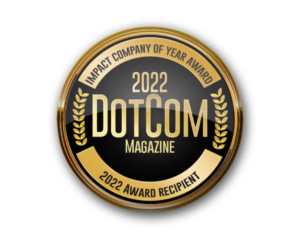The age of artificial intelligence (AI) is here, and it’s transforming the way we work, innovate, and lead. For executives and leaders, this presents a dual-edged challenge: adopting cutting-edge AI technologies to drive efficiency and innovation while ensuring a human-centered approach that fosters trust, engagement, and collaboration.
In this fast-evolving landscape, the question isn’t whether leaders should embrace AI—it’s how they can do so effectively while maintaining the human touch that sets great leadership apart. Here’s are five ways to navigate this new terrain.
1. Start with purpose: Align AI adoption with organizational goals
AI is not a magic bullet; it’s a tool. Leaders need to begin with a clear understanding of their organization’s goals and determine where AI can add the most value. Is it streamlining operations? Enhancing customer experiences? Improving decision making?
By aligning AI implementation with your organizational mission, you ensure that technology serves your people, not the other way around. This alignment also helps employees see AI as a resource, not a replacement for their contributions.
2. Foster a culture of learning and transparency
AI can be intimidating, especially for teams uncertain about how it will impact their roles. To mitigate fear and resistance, leaders must cultivate a culture of learning and transparency.
3. Prioritize ethical implementation
With great power comes great responsibility. AI deployment must be guided by ethical considerations to avoid biases, data misuse, and unintended consequences.
4. Balance efficiency with empathy
AI can handle repetitive tasks, analyze massive data sets, and even make predictions—but it cannot replicate human empathy or emotional intelligence. These qualities remain essential for effective leadership.
Leaders must focus on building strong interpersonal connections and nurturing an inclusive culture. Use AI to free up time for meaningful human interactions rather than replacing them. This balance ensures that while your organization benefits from technological advancements, it doesn’t lose sight of its people.
5. Stay agile and future-focused
The pace of AI innovation means leaders need to stay agile, ready to pivot strategies as technology evolves. This requires staying informed about emerging trends, experimenting with new tools, and remaining open to feedback from your team.
Encourage a mindset of continuous improvement, both for yourself and your organization. AI is a journey, not a destination, and the leaders who remain adaptable will be best positioned to thrive.
Final thoughts: Lead with purpose
Artificial intelligence is transforming the workplace, but the true measure of leadership in this era isn’t just about adopting technology—it’s about balancing innovation with humanity. Leaders who prioritize purpose, transparency, ethics, empathy, and agility will not only navigate this transformation successfully but will also build organizations that thrive in the future.
#AILeadership, #ArtificialIntelligence, #BusinessInnovation, #ExecutiveStrategy, #DigitalTransformation, #EthicalAI, #WorkplaceAutomation, #LeadershipDevelopment, #CorporateStrategy, #FutureOfWork, #AIAdoption, #HumanCenteredLeadership, #TechnologyTrends, #BusinessGrowth, #InnovationStrategy, #AIethics, #LeadershipAgility, #EmployeeEngagement, #OrganizationalCulture, #AIIntegration, #ExecutiveDecisionMaking, #LeadershipBestPractices, #AIDrivenInnovation, #FutureReadyLeadership









